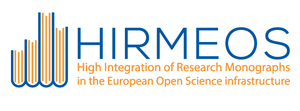The services targeted by the project are closely connected inter-dependant and cumulative in a modular architecture. They fall into 2 categories : basic and advanced services.
Basic services
- Identification services will attribute several identifiers to the documents, hence allowing to create links between publications and other digital objects. The data service will produce 3 additional data : authors identification, documents identification, named entities identification.
- Entity recognition and disambiguation through entity-fishing service.
- Certification service will guarantee that monographs selected inside the platforms are compliant with common open science criteria : the certification service will produce and expose in a standardized way 2 additional data : description of peer-reviewing process and licence information
Advanced services
- Open annotation will add open peer review and open commentary to the documents and link to them through unique identification. It will increase interactions with users inside and outside the academic field. It will add 1 additional data to the document : annotations produced by the users.
- Usage Metrics services will standardize usage measures on the documents and add 1 additional data : usage indicators such as downloads and social media impact
Whenever it’s possible HIRMEOS will use the most widely used technologies and standards in the scientific community, especially those that are dominant in the publishing industry to enable Open Access books to have a standing in the competitive commercial sector.
| Type of service | Type of data | Technology or Standards |
|---|---|---|
| Identification | Authors ID | ORCID |
| Documents ID | DOI | |
| Entity recognition | Named entities | Entity-fishing |
| Certification | Peer Review process | DOAB PR types |
| License | Creative Commons | |
| Annotation | Open peer review | hypothes.is |
| Open Commentary | hypothes.is | |
| Usage metrics | Downloads | COUNTER |
| Citations/Reviews | Crossref - Google Scholar | |
| Social media impact | ALM |
There will be four levels of implementation for each of the five mentioned sercices with the first two being mandatory within the project consortium, a) API connection, b) exchange of data and metadata via OAI-PMH, c) visualization of generated data on the platform, d) making one or more of the services functional for users.
